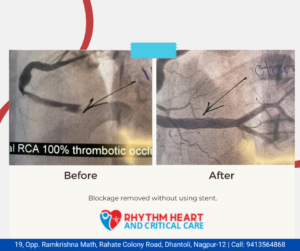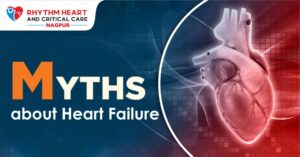Heart attacks are among the leading causes of death worldwide, and understanding the various Heart Attack Types and their symptoms is crucial for early detection and prevention. Heart attacks, medically known as myocardial infarctions, occur when the blood flow to a part of the heart muscle is blocked, often due to a buildup of plaque in the coronary arteries. This blockage can lead to significant damage to the heart muscle, making timely recognition of symptoms essential.
Understanding the Different Heart Attack Types
There are several Heart Attack Types that vary based on the severity of the blockage and the area of the heart affected. The primary types include:
- ST-Elevation Myocardial Infarction (STEMI): This is the most severe type of heart attack. It occurs when a coronary artery is completely blocked, leading to a significant portion of the heart muscle being deprived of oxygen. The “ST-elevation” refers to a specific pattern seen on an electrocardiogram (ECG). Immediate medical attention is crucial to restore blood flow and minimize heart damage.
- Non-ST-Elevation Myocardial Infarction (NSTEMI): This type of heart attack occurs when a coronary artery is partially blocked. While it is less severe than a STEMI, it still requires prompt medical treatment to prevent further heart muscle damage.
- Silent Heart Attack: As the name suggests, a silent heart attack may occur without the typical symptoms associated with heart attacks. This type of heart attack can go unnoticed until a person undergoes tests for another condition. Despite the lack of obvious symptoms, it can still cause significant heart damage.
- Coronary Artery Spasm (Prinzmetal’s Angina): This is a rare type of heart attack caused by a sudden spasm in a coronary artery, which temporarily reduces blood flow to the heart muscle. These spasms can occur even in people without significant coronary artery disease.
Recognizing the Symptoms of a Heart Attack

Heart Attack Types can influence the symptoms experienced by an individual, but some common symptoms to watch for include:
- Chest pain or discomfort: This is the most common symptom and is often described as a feeling of pressure, tightness, or squeezing in the chest. The pain may radiate to the arms, neck, jaw, or back.
- Shortness of breath: Difficulty breathing, even when resting, can be a sign of a heart attack. This symptom often accompanies chest pain but can also occur on its own.
- Nausea or vomiting: Some people experience an upset stomach or vomit during a heart attack, which can be mistaken for indigestion.
- Sweating: Breaking out in a cold sweat without any apparent cause is another common symptom of a heart attack.
- Lightheadedness or dizziness: Feeling faint or dizzy can indicate that the heart is not pumping blood efficiently, a potential sign of a heart attack.
- Fatigue: Unexplained fatigue, particularly in women, can be a symptom of a heart attack. It may occur days or even weeks before the actual event.
It’s important to note that symptoms can differ between men and women. Women are more likely to experience atypical symptoms such as shortness of breath, nausea, and back or jaw pain, which can sometimes lead to delays in seeking treatment.
At What Age Can a Heart Attack Occur?
Heart attacks are often associated with older adults, but they can occur at any age. Traditionally, men over 45 and women over 55 are considered at higher risk. However, there has been a concerning trend of heart attacks occurring in younger individuals, including those in their 30s and 40s. This rise in younger patients is often linked to factors such as poor diet, lack of exercise, smoking, high stress levels, and the increasing prevalence of conditions like diabetes and obesity.
While age is a significant risk factor, it’s crucial to recognize that lifestyle choices play a major role in heart health. Even if you’re younger, leading a sedentary lifestyle, eating an unhealthy diet, or smoking can significantly increase your risk of developing heart disease and experiencing a heart attack.
Highlights:
Understanding the various Heart Attack Types and recognizing their symptoms are vital steps in protecting your health. Heart attacks can happen to anyone, regardless of age, making it essential to be aware of the warning signs and to seek medical attention immediately if you suspect a heart attack. By staying informed and making heart-healthy lifestyle choices, you can reduce your risk and ensure that you’re better prepared to respond in case of an emergency.
Want to know why Rhythm Heart and Critical Care is known as the best cardiologist in Nagpur? Check out our website for more information.
Additionally, If you want to know more in detail about the Heart Disease Types and Symptoms, you can check it out on the provided resources for more information.






